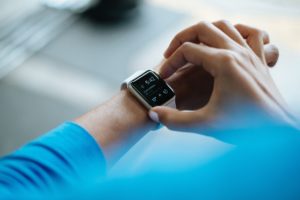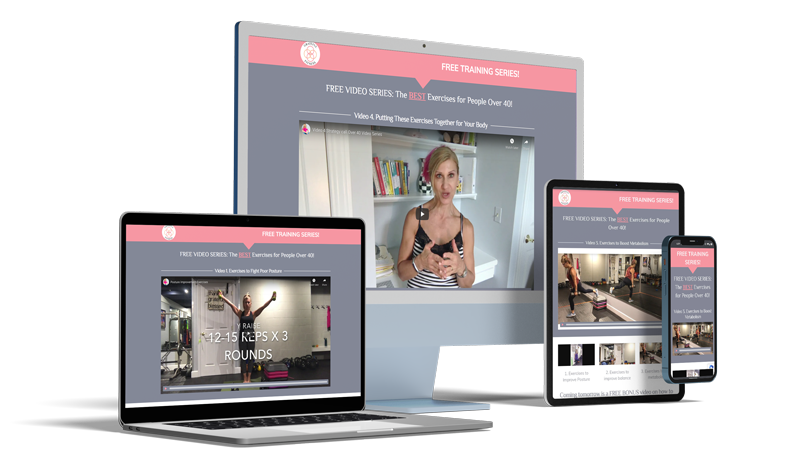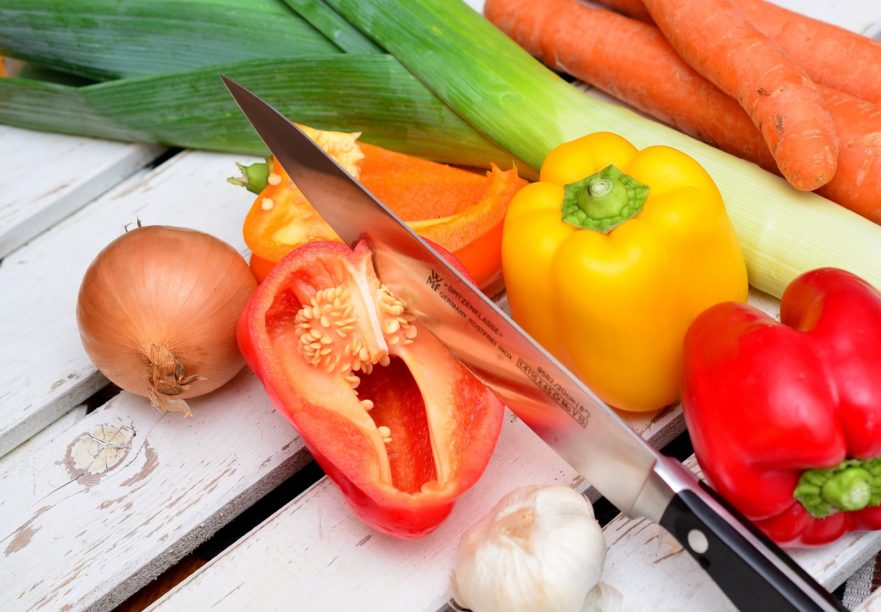Jill was becoming a nutrition all-star. As one of my dedicated midlife clients, she was passionate about consistently attending workouts and fueling her body for health. Recently she confided in me that she was doing everything ‘right’ and feeling awful.
Every day she had a blended protein bowl packed with green lettuces and fruit. Midday, she chose a huge salad with protein, and at dinner, she ate loads of veggies too. After several days of being consistent, she was experiencing painful bloating and she felt like another meal of high percentage veggies would make her explode.
Is this too much of a good thing? Maybe.
How to handle all those veggies for fat loss without painful bloat:
1. Increase gradually.
Back off on some of your fiber intake if you increased in a rapid fashion. Then gradually increase fiber as tolerated. A good strategy is to increase fiber at one meal for a week, and then increase at a second meal a week later if you tolerate this well. Do a body check and back off a bit if you have bloating that doesn’t go away after a few hours.
2. Hydrate more.

Breakdown of fiber requires adequate water.
3. Take it slow and really chew your food to the soft stage.

Remember high school biology? Digestion begins in your mouth. So put the fork down between bites, especially veggies, and chew more thoroughly than you think you need to. A perk is that your meals will be more enjoyable.
4. Wait to be sure your stomach is empty between meals.
Adding volume to a full stomach puts more stress on your digestive system. Stress for many of us means bloating and gas. Remember our gut has so many nerve endings that actually acts as a second brain, and will respond to physical stress.
5. Consider a daily fasting period.

Pay attention to the number of hours between your last evening intake of food and your first bite the next day. This gives your gut a rest. Digestion is work. And periods of rest for your gut can be restorative, especially in midlife. Start with a 12-hour window, and if that feels easy, experiment with a 12-15 hour fast to see how your body reacts. Tolerance of hours of fasting is highly unique. For some people, it can feel like there is too much to eat too short of a window of time. For others, it works quite well.
There is one more fact for midlife health and fitness. In midlife, the digestion process naturally slows down. Here are a few strategies to help prevent discomfort. Pay attention to your body and making sure you are actually hungry before your next meal. This is easy, just be aware of stomach growls. This is a good sign.
The hunger hormone Ghrelin is telling you its safe to feed fuel up. For some people, a digestive enzyme may be of help. Contact your physician to see if this is right for you. You may also want to consider taking probiotics to populate your gut microbiome with beneficial bacteria. Look for one with Lactobacillus and Bifidobacter strains and a minimum of 20 billion CFUs
A final note: Honor your individual response and be patient. Pay attention to your outcomes. In time you likely will tolerate a daily fiber intake in the range of 25-40 grams per day. More is not better, and in fact, going much above the high end of the recommended daily fiber intake can interfere with absorption of micro and macronutrients.
Chronic gas and bloating may be a sign of unidentified food intolerance or other insults. Contact your physician if you are concerned.
FREE Video Series: The Best Exercises for Women Over 40!

Free 3-Part video Series goes in-depth teaching you how to perform the above exercises step-by-step THE RIGHT WAY without getting hurt.


